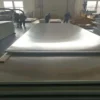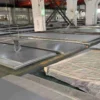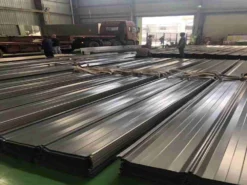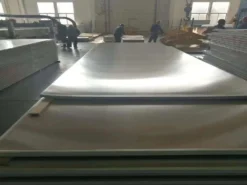Stainless steel plates refer to steel plates that are resistant to corrosion by weak media such as atmosphere, steam, and water, while acid-resistant steel plates refer to steel plates that are resistant to corrosion by chemically corrosive media such as acids, alkali, and salts. The stainless steel plate has a smooth surface, the same plasticity, toughness and mechanical strength, and is resistant to corrosion by acids, alkaline gases, solutions and other media. It is an alloy steel that is prone to rust, but is not absolutely rust-free.
Performance:
-Corrosion resistance
Stainless steel plates have a similar ability to resist general corrosion as unstable nickel-chromium alloy 304. Prolonged heating in the temperature range of chromium carbide levels may affect alloys 321 and 347 in harsh corrosive media. Mainly used for high temperature applications, which require materials with strong resistance to sensitization to prevent intergranular corrosion at lower temperatures.
-High temperature oxidation resistance
Stainless steel plates all have high-temperature oxidation resistance, but the oxidation rate will be affected by inherent factors such as exposure environment and product form.
-Physical properties
The overall heat transfer coefficient of a metal depends on other factors in addition to the thermal conductivity of the metal. In most cases, the heat dissipation coefficient of the film, rust scale and surface condition of the metal. Stainless steel keeps its surface tidy, so it conducts heat better than other metals with higher thermal conductivities. The flame of oxygen plus gas cannot cut stainless steel plates because stainless steel is not easily oxidized.
Elemental effects
-Carbon (C): 1. Improve the blade’s resistance to deformation and tensile strength; 2. Enhance its hardness and improve its wear resistance.
-Chromium (Cr): 1. Enhances hardness, tensile strength and toughness; 2. Prevents wear and corrosion.
-Cobalt (Co): 1. Increases hardness and strength so that it can withstand high-temperature quenching; 2. Used in more complex alloys to strengthen certain individual properties of other elements.
-Copper (Cu): 1. Enhance corrosion resistance; 2. Enhance wear resistance.
-Manganese (Mn): 1. Increases hardenability, wear resistance and tensile strength; 2. Takes away oxygen from the molten metal through separated oxidation and separated vaporization; 3. When added in large amounts, it enhances hardness, but increases brittleness.
-Molybdenum (Mo): 1. Enhance strength, hardness, hardenability and toughness; 2. Improve machinability and corrosion resistance.
-Nickel (Ni): 1. Enhances strength, hardness and corrosion resistance.
-Phosphorus (P): Enhances strength, machinability and hardness.
Classification:
-By Thickness
(1) Thin plate (0.2mm-4mm) (2) Medium plate (4mm-20mm) (3) Thick plate (20mm-60mm) (4) Extra thick plate (60-115mm)
-By Production Method
(1) Hot rolled steel plate (2) Cold rolled steel plate
-By surface features
(1) NO.1, Silver white, matt, hot rolled to specified thickness.
(2) NO.2D is silvery white. It is heat treated and pickled after cold rolling. It is used for deep drawing.
(3) NO.2B, Glossier than NO.2D. After NO.2D treatment, the final light cold rolling is carried out through polishing rollers.
(4) BA, as bright as a mirror. There is no standard, but it is usually a bright annealed surface finish with a very reflective surface. Building materials, kitchen utensils.
(5) NO.3, Coarse grinding
(6) NO.4, Intermediate grinding
(7) NO.240, Fine grinding
(8) NO.320, Extremely fine grinding
(9) NO.400, Gloss close to BA
(10) HL, Building and construction materials
(11) NO.7, Mirror grinding
(11) NO.8, Mirror grinding













